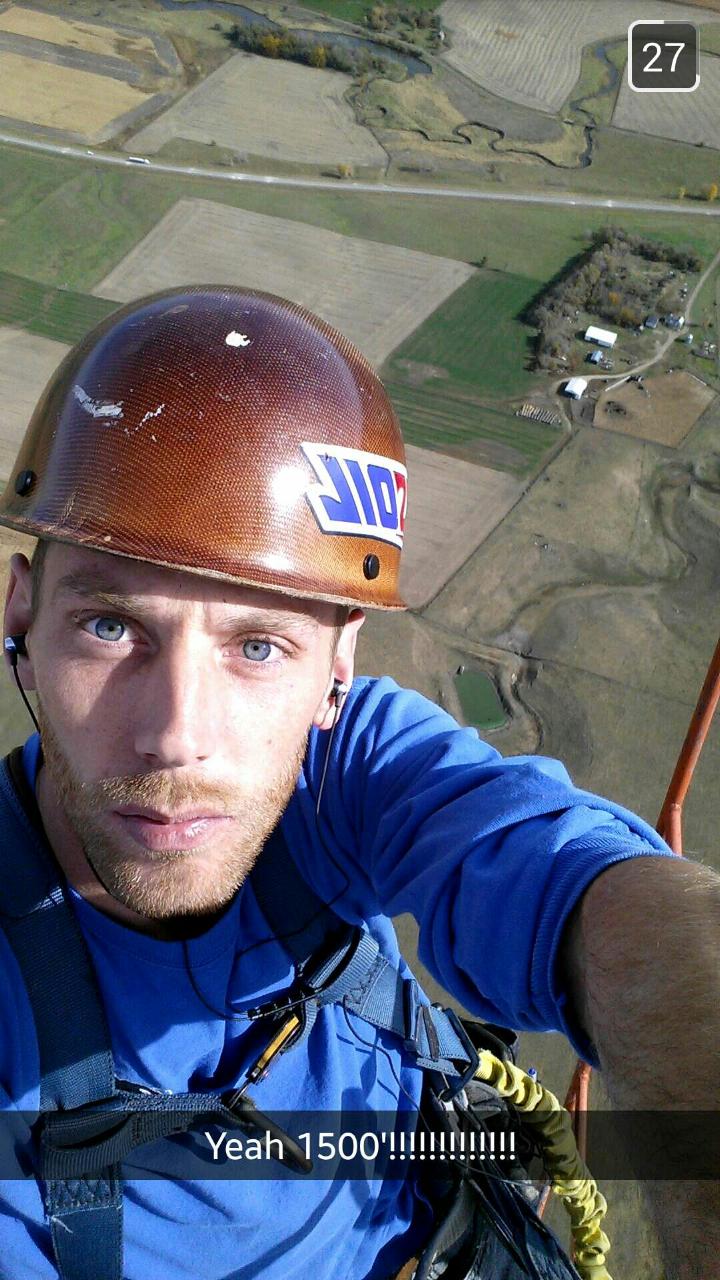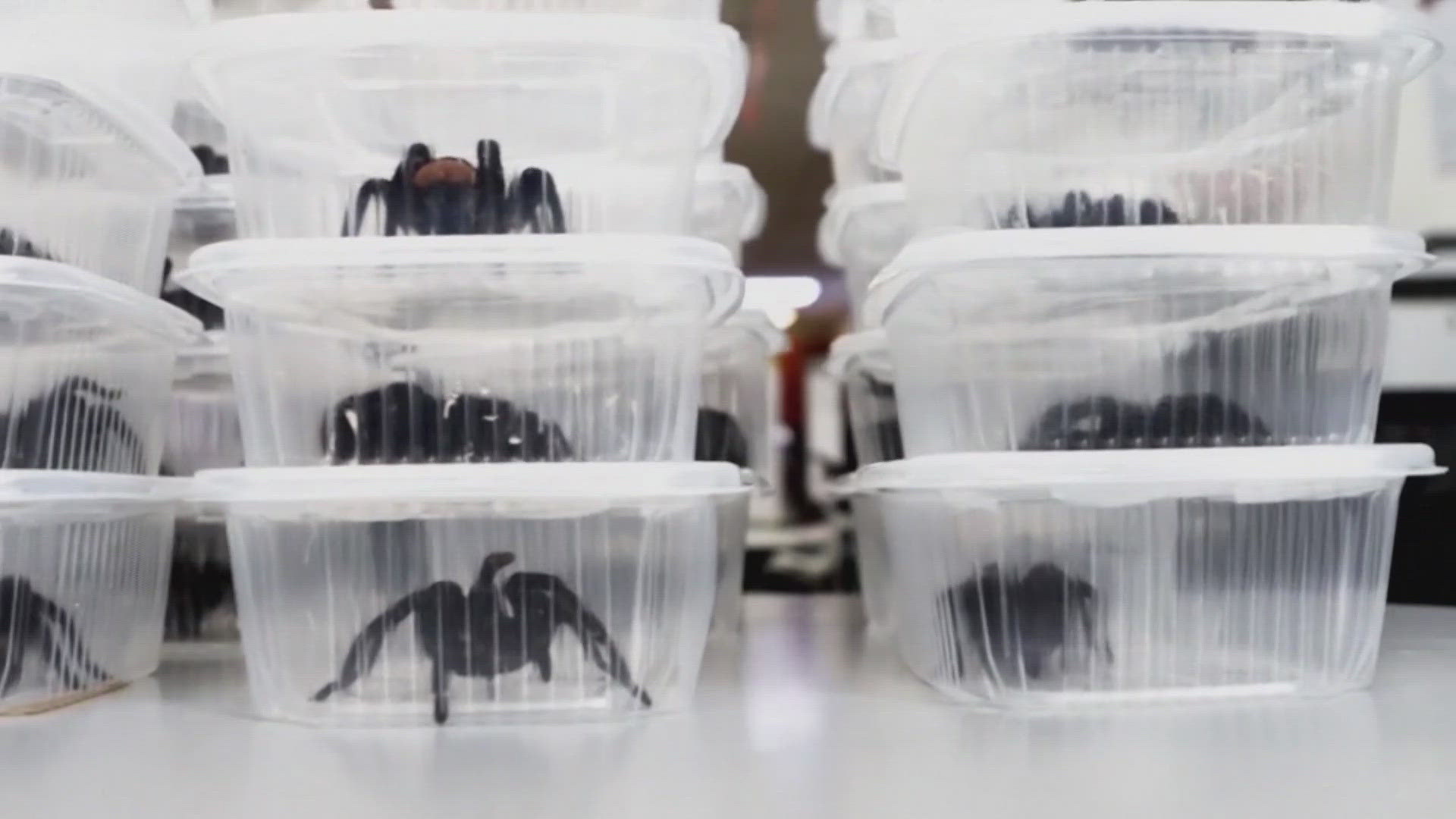![-Screen Shot 2015-01-07 at 12.59.58 PM.jpg_20150107.jpg[ID=21431785] ID=21431785](http://www.gannett-cdn.com/-mm-/7b32e5f2a11da9517457bf05318d85d3a957d72c/c=290-0-1384-937/local/-/media/SiouxFalls/2015/01/08/B9315775913Z.1_20150108102501_000_GD39K4LLI.1-0.jpg)
SIOUX FALLS, S.D. — For Rapid City native Kevin Schmidt, there's nothing odd about climbing 1,500 feet in the air to change a light bulb.
He's climbed hundreds of towers during the past eight years, in dozens of states, through every season, sometimes in 60 mph winds. It's part of the job at Sioux Falls Tower and Communications.
For the rest of the world, Schmidt's vertigo-inducing workday is anything but normal.
"Some of my friends can't believe I do it," Schmidt said. "They get scared on top of their house."
Perhaps that explains why a stunningly crisp video of Schmidt ascending an aging TV tower near Salem last fall has gone viral, attracting more than 1.3 million hits on YouTube.
"I didn't expect it would get this big," Schmidt said.
Neither did Todd Thorin, a co-worker of Schmidt's at Sioux Falls Tower who shoots drone footage on the side for a start-up venture called Prairie Aerial.
He's filmed dozens of videos since founding the company last year, but none has nabbed as much attention as Schmidt's 1,500-foot climb. Facebook links from a HAM radio website helped spark the Internet's interest this week It passed a million views Wednesday and was at 1,325,325 Sunday night, with most of those views coming since Monday.
![1500' TV Tower[ID=21617251] ID=21617251](/Portals/_default/Skins/PrestoLegacy/CommonCss/images/smartembed.png)
"It was partially because I knew it would look cool, but it was also so we could see what we could do with it," said Thorin, Sioux Falls Tower's director of safety and training.
One of Thorin's sons piloted the drone, wearing a pair of goggles that "made him look like a zombie." The drone's battery lasts for only 15 minutes, so after accounting for the one-and-a-half minute flight to the top and allowing time for descent, the crew had about eight minutes of hang time to shoot what Thorin edited into a 2-minute clip.
![-Screen Shot 2015-01-07 at 12.59.19 PM.jpg_20150107.jpg[ID=21431781] ID=21431781](http://www.gannett-cdn.com/-mm-/1338e9cf134e54fa9e67901c79417a4ceb84bb1f/c=286-0-1389-944/local/-/media/SiouxFalls/2015/01/08/B9315775913Z.1_20150108102501_000_GD39K4LML.1-0.jpg)
Thorin monitored the footage from the ground on a 9-inch high-definition screen and acted as a "spotter," using binoculars to watch for anything that might show up behind the drone.
"As the pilot, you want somebody to tell you what's behind you," he said. "Of course, up there, we weren't going to bump into anything."
There's a Federal Aviation Administration-imposed buffer zone of 500 feet between TV antennas and any aircraft that might come near it. That's why Schmidt made the 2-hour climb in the first place — the red flashing bulb that warns aircraft of mile-high obstacles had burned out.
The FAA is a thorny subject for Thorin's start-up, actually. The Administration has said publicly that drones flown for commercial use must follow the same rules as any other commercial aircraft. Drone operators are expected to stay within 400 feet of the ground, as well, Thorin said. His drone was far higher up than that.
As for the buffer imposed on commercial aircraft, Thorin said, the drone was "well within the 500 feet" during the light bulb video. He hasn't been contacted by the FAA, he said, but knows "it's a controversial area of technology right now."
![-Screenshot952014-10-24-14-17-16.jpg_20150107.jpg[ID=21431783] ID=21431783](http://www.gannett-cdn.com/-mm-/b814e7ebac8c23167137b7b3f7ea446d86df787f/c=0-332-720-948/local/-/media/SiouxFalls/2015/01/08/B9315775913Z.1_20150108102501_000_GE79K49BE.1-0.jpg)
Schmidt says he was happy to have his co-worker's cameras in the sky with him. He loves his job, he says, because he gets to see the world from such great heights.
"You can finally see what it looks like up there," Schmidt said.
It can be difficult for companies such as Sioux Falls Tower to find willing climbers, Thorin and Schmidt said, but Schmidt would recommend the work to anyone who isn't afraid of heights.
"You can't beat the view, and there's no greater sense of peacefulness than to be 1,500 feet in the air by yourself," Schmidt said.
Not that Schmidt wants to keep it to all to himself. Near the end of the viral video, he's shown pulling out a cellphone and taking a selfie.
"Every time I climb a tower, I take a selfie and send it to my wife, Alla," Schmidt said.


